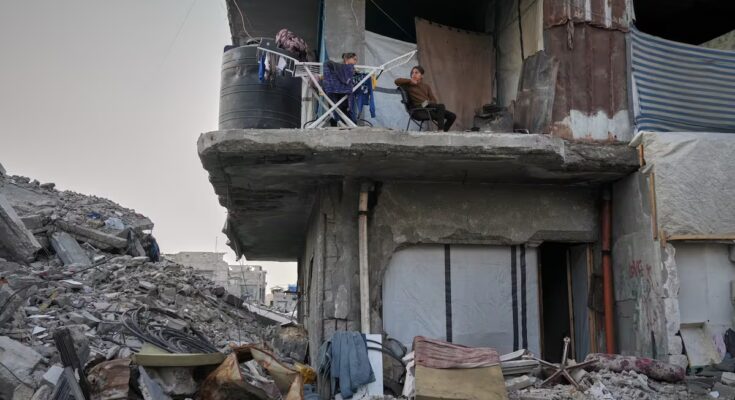The approval by the United Nations Security Council of a resolution on the future of Gaza – to which is added the 20-point plan promoted by the United States – represents, despite its uncertain path, an important step for the future of the Palestinian territory because, for the first time, the international community agrees in a concrete way on how the Strip will be governed in the coming years. Even if it is true that the list of resolutions on Palestine not respected by Israel is more than long, this text, supported by 13 votes in favor and the abstention of China and Russia, is at least a feasible project that arrives after two years of desperation and in a particularly difficult moment for the population of Gaza, who has seen how the massacre caused by the Israeli army is now compounded by floods on a devastated landscape.
The resolution orders the creation of an international security force in Gaza (ISF) that will operate until at least December 2027. A possibility rejected in the past by Israeli Prime Minister Benjamin Netanyahu, reluctant that any international presence could hinder the unrestricted actions of his army. Since the ceasefire began, more than 200 people have been killed in attacks. To highlight the twisted underlying conflict, Hamas has expressed its rejection of this force, which it accuses of being a “mechanism at the service of the occupation”. Netanyahu instead applauds the idea of “complete disarmament and deradicalization of Gaza,” according to his interpretation of the agreement.
The ISF will control Gaza’s borders not only with Israel, but also with Egypt. Additionally, foreign soldiers will train Palestinian police forces in the Strip. If the Israeli-Palestinian conflict has shown anything it is that the optimism of the documents is often destroyed by reality, but the creation of conditions that wrest absolute control of Gaza, its citizens and its borders from Israel, with the support of Washington, the only international player with resources and influence over Israel, is still positive.
Even if the forces on the ground will not be made up of American soldiers, Resolution 2803 lays the foundation for the establishment of some sort of transitional government under the presidency of Donald Trump. According to the American proposal, it is a technical table made up of Palestinian citizens, without Hamas, but supervised at an international level. Moscow and Beijing have expressed their reservations about a project that, despite being the only practical option on the table, is too imbued with Trump’s personal brand not only in its origin, but also in its management.
While all this is happening in offices in New York, the situation in Gaza is, if anything, more desperate. Torrential rains last week flooded the grounds where tens of thousands of tents had been erected. The Gaza government’s press office reported that 93 percent of the enclave’s 135,000 shops are uninhabitable. The rest are ruins, leaving Palestinians with no options before winter arrives. Israel’s systematic destruction of infrastructure has led to the disappearance of drainage and sewage systems, resulting in excessive water stagnation and a real danger of epidemic infections. Humanitarian aid began to arrive after the ceasefire, but it is still very insufficient. Future plans are welcome, but Gazans need immediate help.



